Wanderlust Beginnings: Top 5 Best First Time Backpacking Destinations
Introduction:
Are you excited to go on a fantastic adventure that will create unforgettable memories and help you appreciate the amazing world we live in? Here we will share top 5 Best First Time Backpacking Destinations. Backpacking is a thrilling way to explore new places and experience the joy of discovery. Whether you’re a seasoned traveler looking for a different kind of journey or someone curious about backpacking for the first time, this blog post is just for you!
In this special guide, we have picked some of the best backpacking destinations, perfect for those who are trying it for the first time. Each place we’ve chosen has something unique and exciting to offer, like beautiful landscapes and fascinating cultures. These destinations are not too difficult, so they’re ideal for beginners who want to have an amazing adventure without feeling overwhelmed.
We know that starting backpacking can be both exciting and a bit scary, so we’ve carefully chosen places with well-marked trails that are easy to follow and incredible views that will leave you in awe. These destinations are perfect for getting started with backpacking.
As you read this blog post, we’ll introduce you to these fantastic places and give you useful tips to make your first backpacking trip a big success. We’ll talk about important things like the gear you need to bring, how to stay safe, and how to be respectful of other cultures. By the end of this guide, you’ll feel ready and confident to take on the challenges and enjoy the wonders of backpacking.
So, let’s begin our journey of a lifetime and explore the best first-time backpacking destinations together! Get ready for some amazing adventures!
Table of Contents
Scroll down to explore top 5 Best First Time Backpacking Destinations in USA
Destination 1: Yosemite National Park, California
Location and Landmarks: Yosemite National Park, located in the western Sierra Nevada of California, USA, is a mesmerizing wilderness wonderland renowned for its striking granite cliffs, towering waterfalls, lush meadows, and ancient sequoia groves. This iconic national park covers an area of over 1,180 square miles and is a UNESCO World Heritage Site, drawing millions of visitors each year. click here for Google Map Location
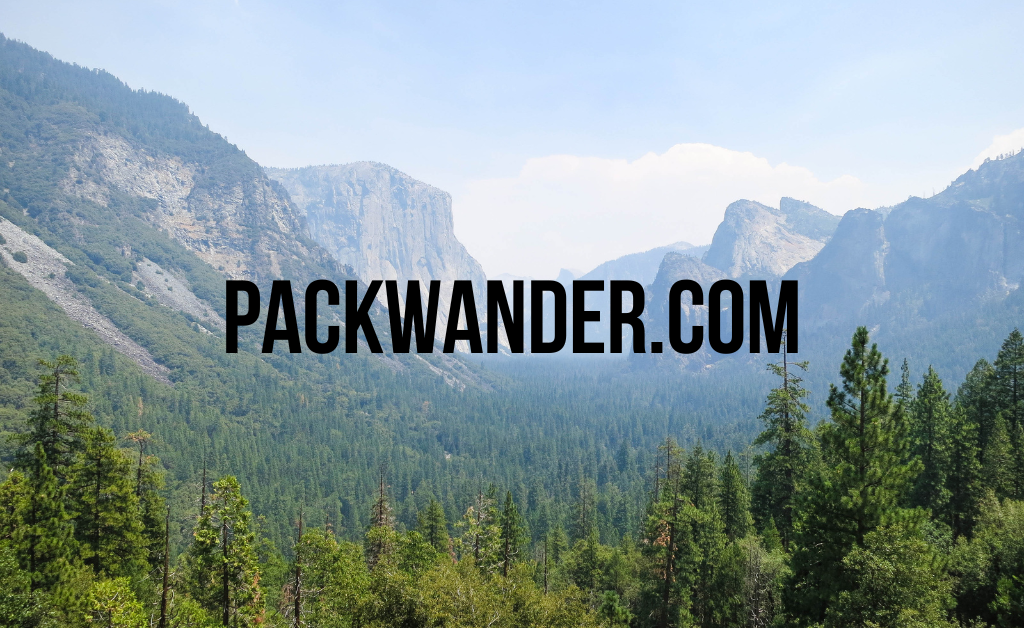
Perfect for First-Time Backpackers: Yosemite National Park is a dream come true for first-time backpackers seeking an immersive outdoor experience without compromising on accessibility and safety. Here’s why it’s an ideal destination for beginners:
- Ease of Access: Situated just a few hours from major cities like San Francisco and Sacramento, Yosemite is easily accessible for both domestic and international travelers. The park’s well-maintained roads and designated parking areas make it convenient for visitors to reach trailheads and embark on their backpacking journeys.
- Well-Marked Trails: Yosemite offers a range of trails catering to various skill levels. For first-time backpackers, the park boasts several beginner-friendly trails that are well-marked, ensuring ease of navigation and reducing the risk of getting lost.
- Scenic Beauty: Yosemite’s breathtaking landscapes are nothing short of a feast for the eyes. From the awe-inspiring granite monoliths of El Capitan and Half Dome to the ethereal beauty of Bridalveil and Yosemite Falls, the park’s stunning vistas reward backpackers with an array of natural wonders at every turn.
- Beginner-Friendly Terrain: While Yosemite offers more challenging routes for seasoned backpackers, it also features gentler terrains suitable for beginners. Trails like the Mist Trail to Vernal Fall or the Mirror Lake Loop provide manageable distances and manageable elevations, allowing newcomers to build confidence and gradually ease into backpacking.
Local Guides and Backpacking Tours: For those seeking additional support and expertise, Yosemite offers several options for guided backpacking tours. These tours are led by experienced guides who are well-versed in the park’s history, geology, and wildlife, providing valuable insights throughout the journey. Having a knowledgeable guide can enhance the backpacking experience, as they take care of logistics, provide safety tips, and ensure you make the most of your time in this breathtaking wilderness.
Whether you choose to explore Yosemite National Park independently or opt for a guided backpacking tour, this iconic destination promises a remarkable introduction to the world of backpacking. So, get ready to be captivated by Yosemite’s natural splendor as you venture into the heart of one of America’s most cherished national parks.
Destination 2: Great Smoky Mountains National Park, Tennessee/North Carolina
Location and Landmarks: Encompassing a vast expanse along the border of Tennessee and North Carolina, Great Smoky Mountains National Park is a treasure trove of biodiversity and scenic wonders. As America’s most visited national park, it spans over 800 square miles and is celebrated for its misty blue mountains, dense forests, cascading waterfalls, and an array of plant and animal species. Click here for Google Map Location
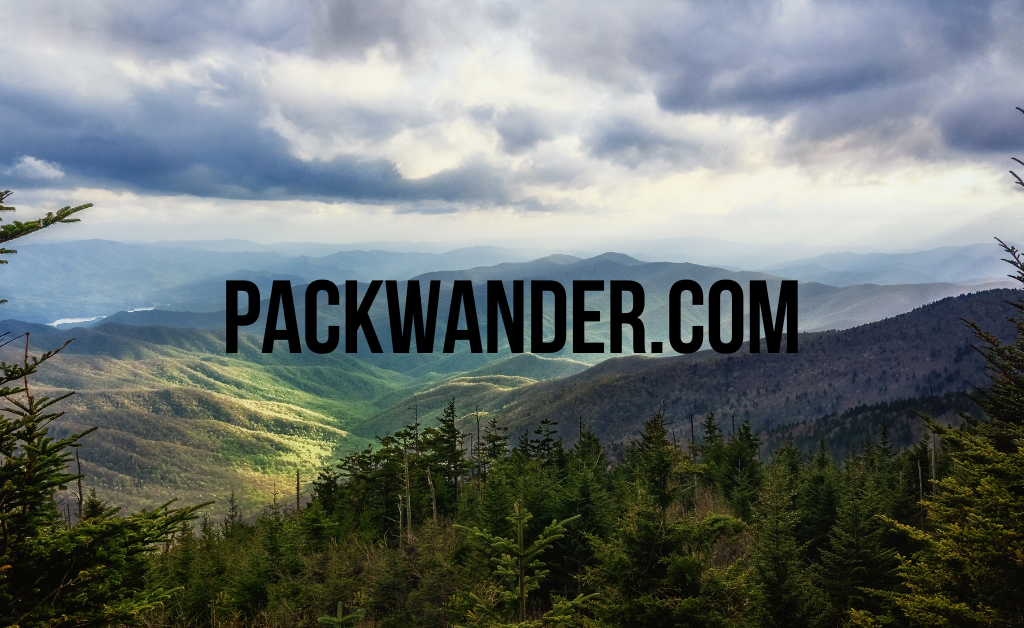
Perfect for First-Time Backpackers: Great Smoky Mountains National Park holds a special allure for first-time backpackers, offering an enchanting experience immersed in nature’s embrace. Here’s what sets this destination apart and makes it a fantastic choice for beginners:
- Abundant Trails and Accessibility: The park boasts an extensive network of well-maintained trails, catering to various difficulty levels. From short day hikes to multi-day backpacking trips, first-time backpackers have a plethora of options to choose from, allowing them to customize their adventure based on their preferences and abilities.
- Lush Forests and Rich Wildlife: The Great Smoky Mountains are a natural haven, draped in rich deciduous forests that come alive with vibrant colors in the fall. Backpackers have the chance to spot an array of wildlife, including deer, black bears, elk, and a diverse range of bird species, making every moment on the trail an exciting opportunity for wildlife enthusiasts.
- Shared Shelters and Campsites: For added convenience, Great Smoky Mountains National Park features several backcountry shelters and campsites. These shared facilities provide a sense of camaraderie among backpackers and lessen the need for carrying extensive camping gear, making it more accessible for beginners.
- Spectacular Waterfalls: The park is home to numerous stunning waterfalls, such as Laurel Falls, Abrams Falls, and Grotto Falls. These natural wonders offer rewarding destinations for day hikes or overnight backpacking trips, making it a memorable experience for first-time adventurers.
- Cultural and Historical Significance: Beyond its natural beauty, the Great Smoky Mountains hold a rich cultural and historical heritage. Backcountry trekkers have the chance to explore the remnants of historic homesteads and learn about the region’s fascinating Appalachian culture.
- Moderate Climate and Year-Round Appeal: The park experiences a moderate climate throughout the year, making it accessible for backpacking during various seasons. Spring showcases vibrant wildflowers, summers offer lush greenery, fall is a symphony of colors, and winter brings a serene and peaceful atmosphere.
Local Guides and Backpacking Tours: For first-time backpackers seeking guided adventures, Great Smoky Mountains National Park offers ranger-led programs and educational hikes. These expert-led tours provide valuable insights into the park’s natural and cultural history, ensuring a rewarding and informative journey for beginners.
Great Smoky Mountains National Park beckons with its diverse landscapes, rich biodiversity, and a plethora of trails suitable for backpackers of all levels. Whether you’re yearning to witness the magic of waterfalls, spot elusive wildlife, or simply bask in the tranquility of nature, this magnificent destination promises an enchanting experience for first-time backpackers. So, don your backpack, breathe in the fresh mountain air, and immerse yourself in the untamed beauty of the Great Smoky Mountains.
Destination 3: Olympic National Park, Washington
Location and Landmarks: Nestled in the northwestern corner of Washington state, Olympic National Park is a pristine gem that encompasses a diverse range of ecosystems, including rugged coastlines, ancient temperate rainforests, snow-capped mountains, and alpine meadows. Covering over 1,400 square miles, the park is a UNESCO World Heritage Site and an International Biosphere Reserve, showcasing the remarkable beauty and ecological significance of the Pacific Northwest. Click here For Google Map Location
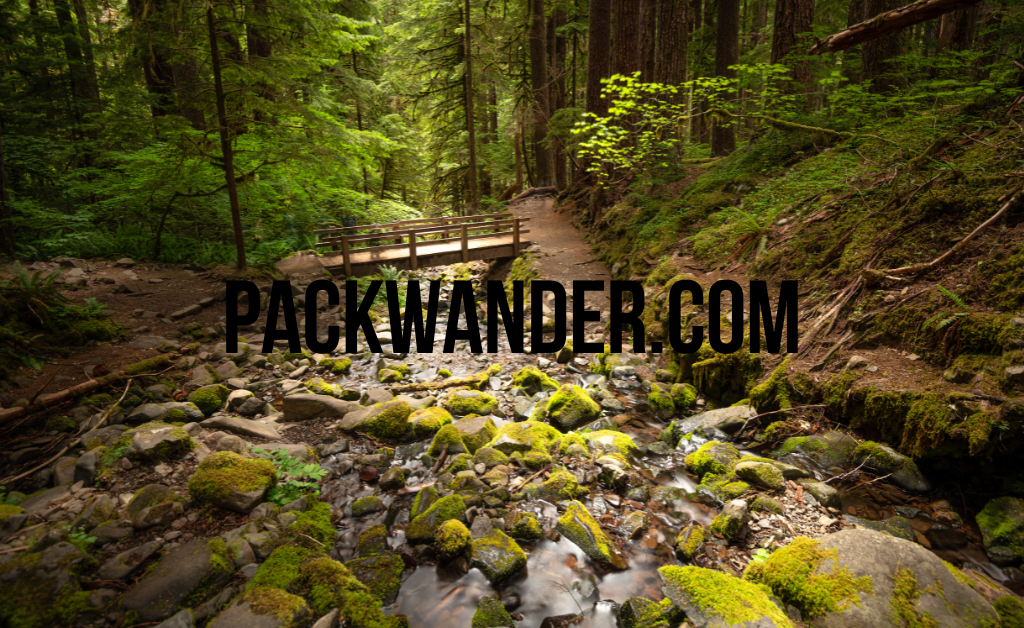
Unique Experiences and Challenges for First-Time Backpackers: Olympic National Park offers a unique and captivating experience for first-time backpackers, but it also presents some distinct challenges. Here are the highlights and potential hurdles that newcomers may encounter:
- Varied Ecosystems and Microclimates: One of the most alluring aspects of Olympic National Park is the vast diversity of landscapes and microclimates within its boundaries. From the rugged coastal areas with sea stacks and tide pools to the lush moss-draped rainforests and the glaciated peaks of the Olympic Mountains, backpackers will encounter an incredible array of environments. While this diversity makes for an enriching experience, it also means being prepared for varying weather conditions and terrain challenges.
- Rainforest Backpacking: The Hoh and Quinault Rainforests within the park are otherworldly, boasting ancient trees covered in emerald moss and a lush undergrowth of ferns and wildflowers. Backpackers here should be prepared for higher humidity levels and more rain compared to other regions, especially during the fall and winter seasons. Adequate rain gear and waterproofing for gear are essential to stay comfortable and dry.
- River Crossings: Several backpacking routes in Olympic National Park require crossing rivers, which can be challenging, especially during periods of high water flow. First-time backpackers should exercise caution and research the current river conditions before attempting any crossings. Trekking poles and water shoes can be valuable tools to aid in river crossings.
- Wildlife Encounters: The park is home to diverse wildlife, including black bears, deer, elk, mountain goats, and a variety of smaller mammals. While encounters with wildlife can be exhilarating, it’s essential to practice proper food storage and bear-safe techniques to minimize the risk of unwanted interactions.
- Permits and Regulations: Some popular backpacking areas in Olympic National Park require permits, especially for overnight stays in the backcountry. It’s crucial for first-time backpackers to familiarize themselves with permit requirements and regulations to ensure compliance and a smooth experience.
- Navigation and Trail Conditions: While many trails in the park are well-maintained, some remote backcountry routes may have limited signage and can be more challenging to navigate. Carrying a map, compass, or GPS device, and having basic navigation skills is highly recommended.
- Leave No Trace in Sensitive Environments: With the delicate ecosystems found in the rainforests and alpine regions, practicing Leave No Trace principles is of utmost importance. First-time backpackers should be diligent about minimizing their impact on the environment and following proper waste disposal and camping practices.
Despite the potential challenges, Olympic National Park is a treasure trove of natural wonders, offering first-time backpackers an unforgettable experience in the heart of the Pacific Northwest’s untamed beauty. With proper preparation, a spirit of adventure, and a willingness to embrace the wild, visitors will be rewarded with memories that will last a lifetime. So, get ready to explore the enchanting landscapes and ecological wonders of Olympic National Park as you embark on your next backpacking adventure.
Destination 4: Rocky Mountain National Park, Colorado
If you’re a first-time backpacker seeking an exhilarating adventure in the heart of the Rockies, look no further than Rocky Mountain National Park in Colorado. With its soaring peaks, alpine meadows, pristine lakes, and diverse wildlife, this iconic national park is an excellent choice for beginners eager to explore the wonders of the Rocky Mountains. Offering a perfect balance of accessibility, scenic beauty, and diverse trails, Rocky Mountain National Park promises an unforgettable and rewarding experience for those venturing into the world of backpacking. Click here for Google Location
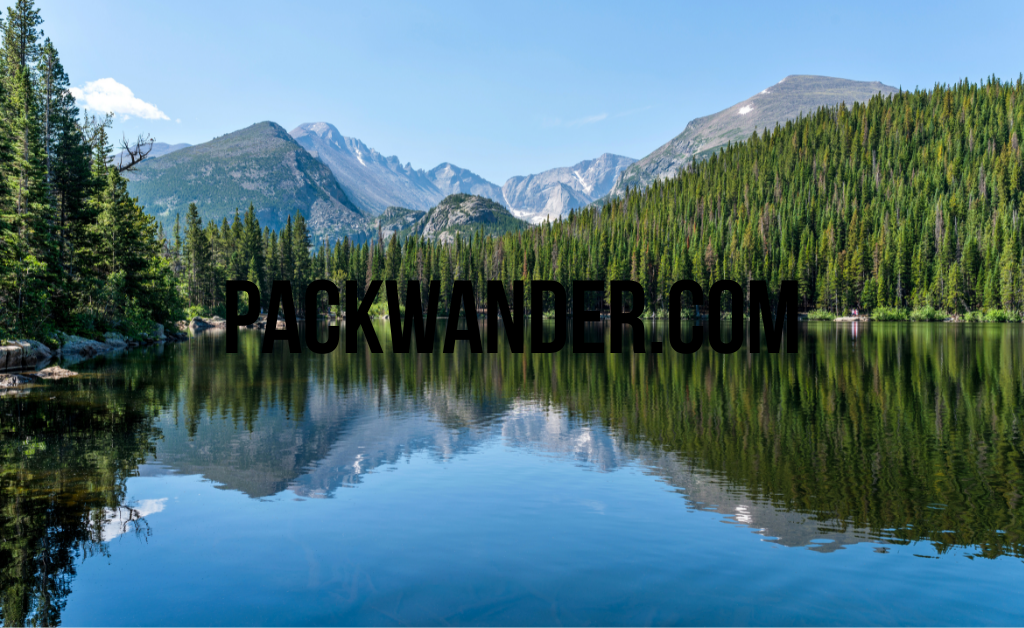
Why It’s Great for Beginners: Rocky Mountain National Park is a dream destination for first-time backpackers due to several compelling reasons:
- Well-Marked and Varied Trails: The park features an extensive network of well-marked trails, catering to all skill levels. From easy day hikes to more challenging multi-day backpacking routes, there’s something for every adventurer. Beginners can choose from a range of trails that offer breathtaking views and diverse landscapes without overly strenuous demands.
- Visitor-Friendly Amenities: Rocky Mountain National Park is designed to accommodate visitors and backpackers with a range of amenities. Campgrounds, visitor centers, and ranger stations provide valuable information and support for those new to the area. Accessible facilities ensure a comfortable experience for backpackers who may be adjusting to life in the backcountry.
- Spectacular Alpine Scenery: The park’s rugged terrain showcases dramatic mountain vistas, including famous peaks like Longs Peak and Hallett Peak. Backpackers are treated to stunning alpine meadows adorned with wildflowers during the summer, creating picture-perfect moments at every turn.
- Abundance of Wildlife: Rocky Mountain National Park is a haven for wildlife enthusiasts. First-time backpackers have the opportunity to encounter various species, including elk, mule deer, bighorn sheep, and even the elusive Rocky Mountain bighorn sheep. These encounters provide a glimpse into the park’s natural diversity and offer unforgettable moments.
- Cultural and Historical Significance: Beyond its awe-inspiring landscapes, the park holds cultural and historical significance. Evidence of early human habitation by Native American tribes adds a layer of historical depth to the experience. Backpackers can explore ancient sites and learn about the Native American tribes that once called this area home.
Cultural and Historical Significance: Rocky Mountain National Park has a rich history of human habitation that spans thousands of years. The area has been home to Native American tribes, including the Ute and Arapaho, who lived in harmony with the land for generations. Evidence of their presence can be found in the form of artifacts, rock art, and hunting grounds scattered throughout the park.
In the early 1900s, efforts to preserve the area’s natural beauty culminated in the establishment of Rocky Mountain National Park. Since then, the park has been a sanctuary for both wildlife and nature enthusiasts alike. Today, visitors can explore historic buildings, such as the Holzwarth Historic Site, which offers a glimpse into the past and showcases the lives of early settlers who sought to coexist with the untamed wilderness.
As first-time backpackers traverse the trails of Rocky Mountain National Park, they are not only immersed in breathtaking landscapes but also immersed in the stories of those who came before. The cultural and historical significance of the park adds a unique dimension to the overall backpacking experience, connecting present-day adventurers with the rich tapestry of human history woven into the fabric of this remarkable wilderness.
With its accessibility, diverse trails, stunning vistas, and cultural depth, Rocky Mountain National Park stands as an inviting and captivating destination for first-time backpackers. Embrace the spirit of exploration and prepare to be inspired as you venture into the majestic heart of the Rocky Mountains.
Destination 5: Zion National Park, Utah
Introduction: For a spellbinding adventure that combines otherworldly landscapes and thrilling backpacking experiences, look no further than Zion National Park in Utah. Renowned for its towering sandstone cliffs, deep canyons, and emerald rivers, Zion’s surreal beauty makes it a captivating choice for first-time backpackers. Offering a perfect blend of accessibility, iconic trails, and unique geology, Zion National Park promises an unforgettable and immersive introduction to the world of backpacking. Click here for Google Location
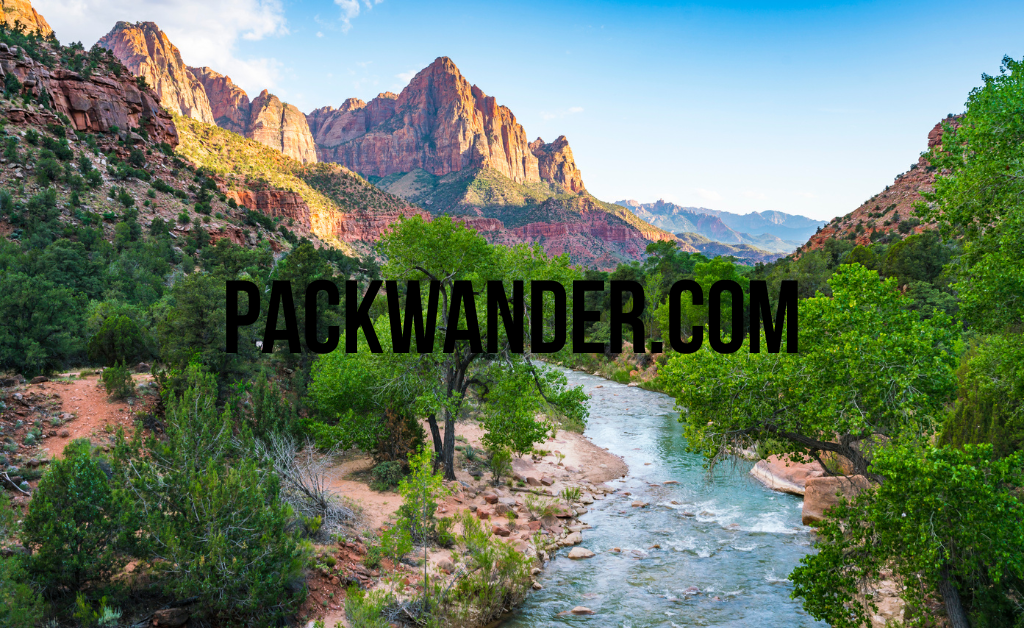
An Excellent Introduction to Backpacking: Zion National Park is an excellent choice for beginners due to several distinctive features that set it apart:
- Iconic Trails and Landmarks: The park’s renowned trails, such as Angels Landing and The Narrows, offer thrilling adventures suitable for beginners seeking a memorable backpacking experience. Angels Landing boasts a challenging yet rewarding hike with breathtaking views of the canyon, while The Narrows takes you through the Virgin River amid soaring canyon walls for a truly unique experience.
- Trail Variety for All Levels: Zion National Park caters to backpackers of different skill levels. Whether you’re looking for short day hikes or longer multi-day treks, the park offers diverse trails that accommodate various preferences and abilities.
- Shuttle System for Accessibility: Zion’s shuttle system ensures easy access to trailheads and major points of interest. This transportation system not only reduces traffic congestion but also allows visitors to explore the park’s highlights without the hassle of driving, making it more convenient for backpackers to access trailheads.
- Unparalleled Geological Features: Zion’s striking red and orange sandstone formations create a surreal and awe-inspiring landscape. Backpackers will find themselves surrounded by stunning rock formations that seem to defy gravity, offering a unique and almost otherworldly setting for their adventures.
- Majestic Slot Canyons: The park is famous for its slot canyons, narrow passages formed by water erosion over millions of years. Hiking through these intricate passages provides an intimate and exhilarating experience with nature’s artwork.
- Cultural and Native American Heritage: Zion has a rich cultural history, with evidence of human habitation dating back thousands of years. As you explore the park, you may come across petroglyphs and other remnants of past civilizations, adding depth and significance to your backpacking journey.
What Sets Zion National Park Apart: While each destination on our list offers something unique, what sets Zion National Park apart is its remarkable combination of geological wonders, diverse trails, and accessibility. The park’s iconic landmarks and geological formations, such as the famous Zion Canyon and the towering cliffs of The Watchman, create a breathtaking backdrop that beckons adventurers to explore its depths.
Moreover, Zion’s accessibility makes it a perfect destination for beginners eager to delve into backpacking. The shuttle system provides a hassle-free means of transportation, while the park’s range of trails ensures that backpackers can choose routes that suit their preferences and comfort levels. Whether you’re seeking panoramic vistas from lofty heights or a wading adventure through the mesmerizing Virgin River, Zion has it all.
In conclusion, Zion National Park is a captivating choice for first-time backpackers, offering a diverse array of trails, awe-inspiring geological wonders, and an immersive experience with nature’s grandeur. As you hike through its majestic canyons and stand in awe of its towering cliffs, you’ll discover the allure of the wilderness and the joy of backpacking amidst one of nature’s most surreal and captivating landscapes. Get ready to embark on a journey of wonder and adventure in the enchanting embrace of Zion National Park.
Considerations for First-Time Backpackers:
Embarking on your first backpacking adventure is an exhilarating experience, but it’s crucial to be well-prepared before setting foot on the trail. Here are some essential considerations and valuable tips that will help you make the most of your first-time backpacking journey:
- Choosing the Right Backpack:
- Opt for a backpack that fits your body comfortably and has adjustable straps for a personalized fit.
- Consider the capacity of the backpack, ensuring it’s spacious enough to hold all your gear without being overly bulky.
- Look for a backpack with multiple compartments to keep your belongings organized and easily accessible.
- Essential Gear:
- Invest in a high-quality, lightweight tent that suits the number of people in your group.
- Pack a sleeping bag suitable for the climate of your destination, and don’t forget a sleeping pad for added comfort.
- Carry a portable camping stove, cookware, and food supplies for nourishing meals on the trail.
- Don’t forget a reliable water filtration system or purification tablets to ensure a safe drinking water source.
- Physical Preparation:
- Start a regular exercise routine to build stamina and endurance for long hikes.
- Prioritize cardiovascular exercises like hiking, running, or cycling to get your body accustomed to physical exertion.
- Gradually increase the intensity and duration of your workouts to mimic the challenges of backpacking.
- Safety Measures:
- Research your chosen destination thoroughly and be aware of any potential hazards or weather conditions.
- Inform someone you trust about your travel plans, including your itinerary and expected return date.
- Familiarize yourself with basic first aid and carry a well-stocked first aid kit with essential medical supplies.
- Leave No Trace Principles:
- Embrace the “Leave No Trace” ethos to minimize your environmental impact while backpacking.
- Always dispose of waste properly, either by carrying it out with you or using designated waste facilities.
- Respect wildlife and maintain a safe distance; avoid feeding animals or leaving food scraps behind.
- Stay on designated trails to protect fragile ecosystems and avoid trampling vegetation.
- Navigational Tools:
- Bring a reliable map and compass or a GPS device to navigate the trails confidently.
- Familiarize yourself with the trail routes before starting your journey, noting key landmarks and potential camping spots.
- Weather Preparedness:
- Check the weather forecast for your destination and pack appropriate clothing layers for varying conditions.
- Be prepared for sudden weather changes, especially in mountainous or remote areas.
- Group Size and Experience:
- Consider backpacking with a small group of friends or family, especially if you’re a beginner.
- If you lack experience, joining a guided backpacking tour can provide valuable support and knowledge.
Remember, preparation is key to a successful backpacking trip. By taking these considerations into account and equipping yourself with the right gear and knowledge, you’ll be well on your way to creating cherished memories and unforgettable experiences on your first-time backpacking adventure.
Practical Tips for First-Time Backpackers:
- Budgeting:
- Plan your budget carefully, considering expenses for transportation, gear, permits, park entrance fees, food, and accommodation.
- Invest in quality backpacking gear, but look for budget-friendly options for essential items like tents, sleeping bags, and backpacks.
- Best Times to Visit:
- Research the best time to visit your chosen destination to avoid extreme weather conditions or peak tourist seasons.
- Consider visiting during shoulder seasons for more pleasant weather and fewer crowds.
- Permits and Reservations:
- Check if your chosen destination requires permits or reservations for camping or specific trails.
- Apply for permits well in advance, especially for popular backcountry routes.
- Camping Etiquette:
- Follow Leave No Trace principles, which include packing out all trash, minimizing campfire impact, and respecting wildlife and other visitors.
- Set up camp in designated areas and adhere to any backcountry camping regulations.
- Safety Measures:
- Inform someone you trust about your travel plans, including your itinerary and expected return date.
- Carry a well-stocked first aid kit and know how to use it.
- Familiarize yourself with local emergency contact numbers and park-specific safety guidelines.
- Leave No Trace Principles:
- Follow the seven Leave No Trace principles: Plan ahead and prepare, travel and camp on durable surfaces, dispose of waste properly, leave what you find, minimize campfire impact, respect wildlife, and be considerate of other visitors.
- Local Customs and Respect for Culture:
- Research and respect local customs, traditions, and cultural norms.
- Be courteous and polite to locals and fellow travelers.
- Gear Essentials:
- Pack essential gear, including a map, compass or GPS device, headlamp, multitool, and a water filtration system.
- Dress in layers to be prepared for varying weather conditions.
- Hydration and Nutrition:
- Stay hydrated by carrying an adequate water supply and refilling at reliable water sources.
- Pack nutritious, lightweight, and easy-to-prepare meals to fuel your journey.
- Physical Preparation:
- Start a fitness routine well before your trip to build stamina and endurance.
- Practice hiking with a loaded backpack to get accustomed to the extra weight.
- Wildlife Awareness:
- Keep a safe distance from wildlife and refrain from feeding them.
- Store food properly to avoid attracting animals to your campsite.
- Weather Preparedness:
- Check the weather forecast regularly and be prepared for sudden changes in weather.
- Pack appropriate clothing and gear for various weather conditions.
Remember that preparation and awareness are crucial for a safe and enjoyable backpacking experience. By adhering to these practical tips and respecting the environment and local customs, you’ll not only make the most of your adventure but also contribute to the preservation of these beautiful destinations for future generations of backpackers. So, lace up your hiking boots, embrace the call of the wild, and embark on a journey of discovery and wonder in the great outdoors!
Frequently Ask Questions FAQs
Where is the Best Place to Backpack for the First Time?
The best place to backpack for the first time depends on your preferences and comfort level. National parks like Yosemite, Great Smoky Mountains, Olympic, Rocky Mountain, and Zion, as mentioned in the blog post, are excellent choices for beginners due to their well-marked trails, accessibility, and diverse landscapes. These parks offer a mix of day hikes and multi-day backpacking routes, making them ideal for first-time adventurers seeking a memorable experience without overwhelming challenges.
How Far Should a Beginner Go Backpacking?
For a beginner, it’s recommended to start with shorter backpacking trips to get acclimated to carrying a loaded backpack and spending nights in the wilderness. Aim for a distance that is manageable and aligns with your fitness level. For day hikes, consider trails that can be completed within a few hours. For multi-day trips, start with a distance of around 5-10 miles per day, gradually increasing the distance as you gain experience and confidence.
How Long Should Your First Backpacking Trip Be?
The duration of your first backpacking trip will depend on several factors, such as your physical fitness, prior outdoor experience, and the complexity of the chosen route. For beginners, it’s advisable to start with a short overnight trip to ease into the experience. Spending one or two nights in the backcountry allows you to familiarize yourself with camping routines and logistics without being too overwhelming. As you gain more confidence and experience, you can plan longer trips spanning several days or even a week.
Where to Start Solo Backpacking?
Solo backpacking can be a rewarding and empowering experience, but safety and preparation are essential. If you’re considering solo backpacking, start with well-traveled and popular trails in established national parks or wilderness areas. These locations often have more visitors and established infrastructure, making them safer for solo hikers. Additionally, ensure you inform someone you trust about your travel plans, carry a reliable map and navigation tools, and be prepared for emergencies. As you gain experience and confidence, you can gradually explore more remote and challenging solo backpacking routes.
Conclusion:
As we conclude our journey through the best first-time backpacking destinations, we have explored a diverse array of captivating landscapes, each offering a unique and thrilling experience for newcomers to the world of backpacking. From the breathtaking beauty of Yosemite National Park to the enchanting wilderness of Great Smoky Mountains National Park, and from the surreal wonders of Olympic National Park to the majestic allure of Rocky Mountain National Park and Zion National Park, these destinations have something extraordinary to offer every adventurer.
These handpicked destinations stand out as ideal choices for first-time backpackers due to their accessibility, well-marked trails, scenic beauty, and diverse landscapes. Whether you’re seeking an introduction to the untamed wilderness or an immersive encounter with rich cultural and historical heritage, these parks have it all. With proper planning, preparation, and adherence to Leave No Trace principles, every backpacking enthusiast, regardless of experience level, can revel in the beauty of these remarkable places.
Take the Leap into the Wild: Now, the time has come for you, dear reader, to take the leap into the wild unknown. Embrace the spirit of adventure and let the call of the wild guide you to your next backpacking expedition. The wonders of these national parks await, ready to leave you with cherished memories and a profound connection to nature.
Share Your Backpacking Adventures: Have you experienced the breathtaking vistas of Yosemite, the misty wonder of Great Smoky Mountains, the ancient rainforests of Olympic, the majesty of Rocky Mountain, or the surreal beauty of Zion? We encourage you to share your backpacking adventures, tips, and insights in the comments section below. Let us build a community of backpacking enthusiasts, supporting and inspiring each other to embark on more incredible journeys.
Whether you’re an intrepid explorer or a curious soul seeking new horizons, backpacking is a doorway to discovery and a pathway to personal growth. So, seize the opportunity, gather your gear, and step into the embrace of nature’s wonders. The world of backpacking beckons, and it’s time for you to create your own unforgettable tales amidst the beauty of these magnificent destinations.






